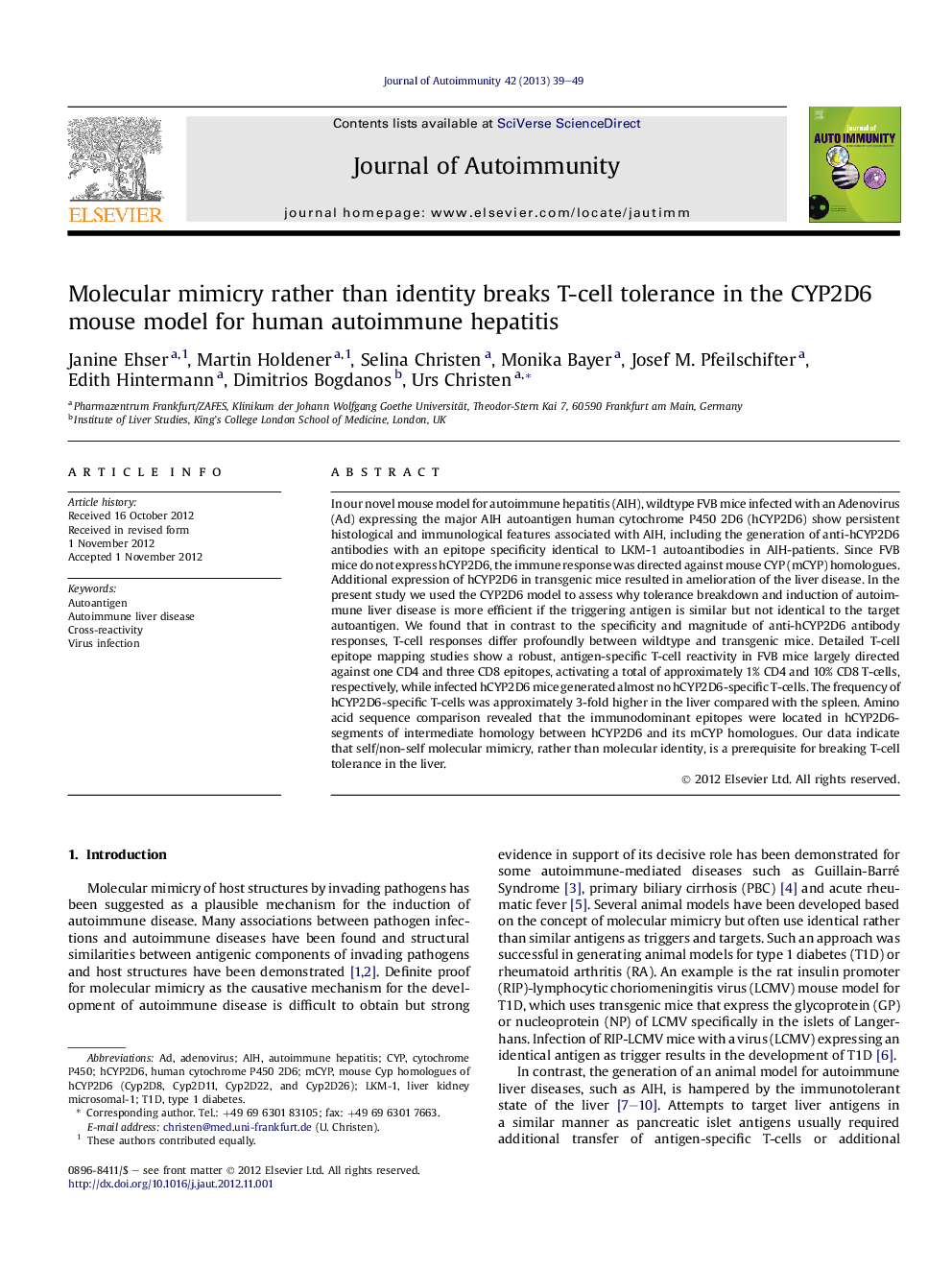| Article ID | Journal | Published Year | Pages | File Type |
|---|---|---|---|---|
| 3367880 | Journal of Autoimmunity | 2013 | 11 Pages |
In our novel mouse model for autoimmune hepatitis (AIH), wildtype FVB mice infected with an Adenovirus (Ad) expressing the major AIH autoantigen human cytochrome P450 2D6 (hCYP2D6) show persistent histological and immunological features associated with AIH, including the generation of anti-hCYP2D6 antibodies with an epitope specificity identical to LKM-1 autoantibodies in AIH-patients. Since FVB mice do not express hCYP2D6, the immune response was directed against mouse CYP (mCYP) homologues. Additional expression of hCYP2D6 in transgenic mice resulted in amelioration of the liver disease. In the present study we used the CYP2D6 model to assess why tolerance breakdown and induction of autoimmune liver disease is more efficient if the triggering antigen is similar but not identical to the target autoantigen. We found that in contrast to the specificity and magnitude of anti-hCYP2D6 antibody responses, T-cell responses differ profoundly between wildtype and transgenic mice. Detailed T-cell epitope mapping studies show a robust, antigen-specific T-cell reactivity in FVB mice largely directed against one CD4 and three CD8 epitopes, activating a total of approximately 1% CD4 and 10% CD8 T-cells, respectively, while infected hCYP2D6 mice generated almost no hCYP2D6-specific T-cells. The frequency of hCYP2D6-specific T-cells was approximately 3-fold higher in the liver compared with the spleen. Amino acid sequence comparison revealed that the immunodominant epitopes were located in hCYP2D6-segments of intermediate homology between hCYP2D6 and its mCYP homologues. Our data indicate that self/non-self molecular mimicry, rather than molecular identity, is a prerequisite for breaking T-cell tolerance in the liver.
Graphical abstractFigure optionsDownload full-size imageDownload as PowerPoint slideHighlights► Ad-2D6-infection induces chronic liver disease and hCYP2D6-specific T-cells. ► Three CD8 and one CD4 T-cell hCYP2D6 epitopes were identified. ► hCYP2D6-specific CD8 T-cells accumulate in the liver. ► hCYP2D6-specific CD8 T-cells kill hCYP2D6 peptide coated target cells in vivo. ► Due to T-cell tolerance liver disease is less severe in hCYP2D6 transgenic mice.
